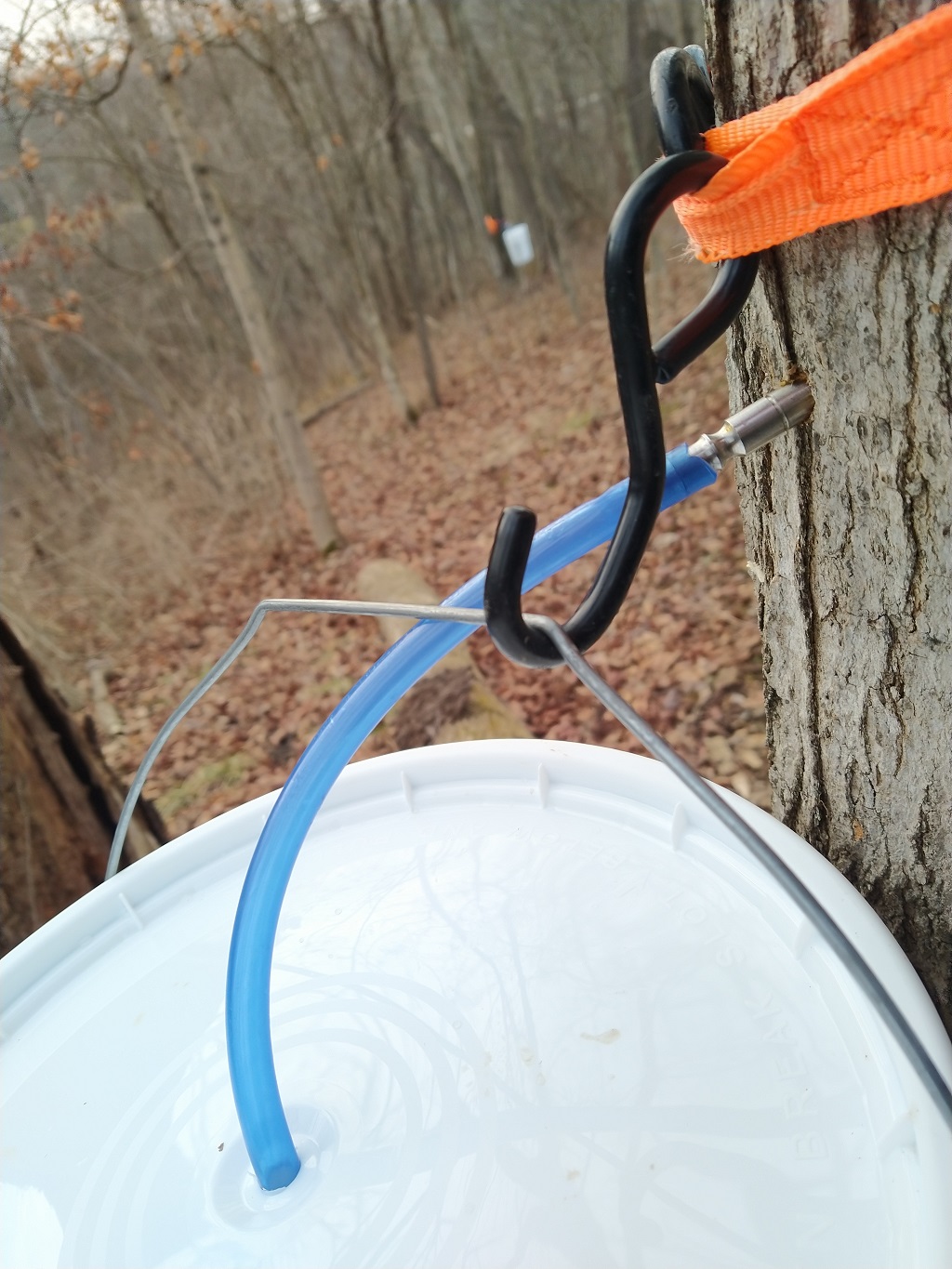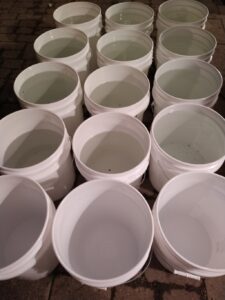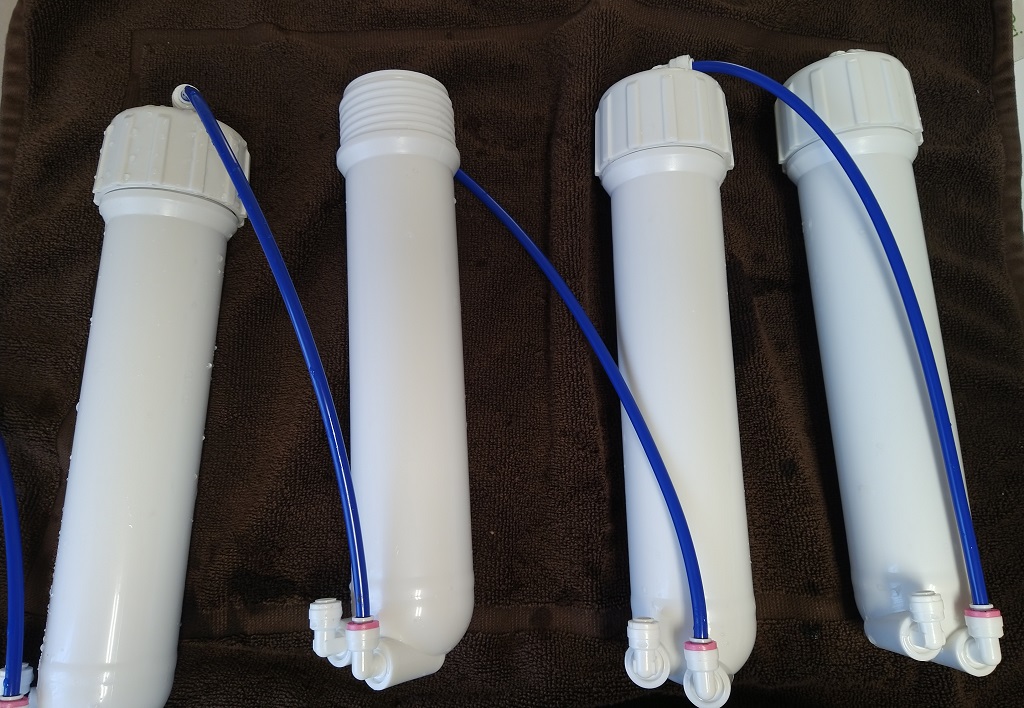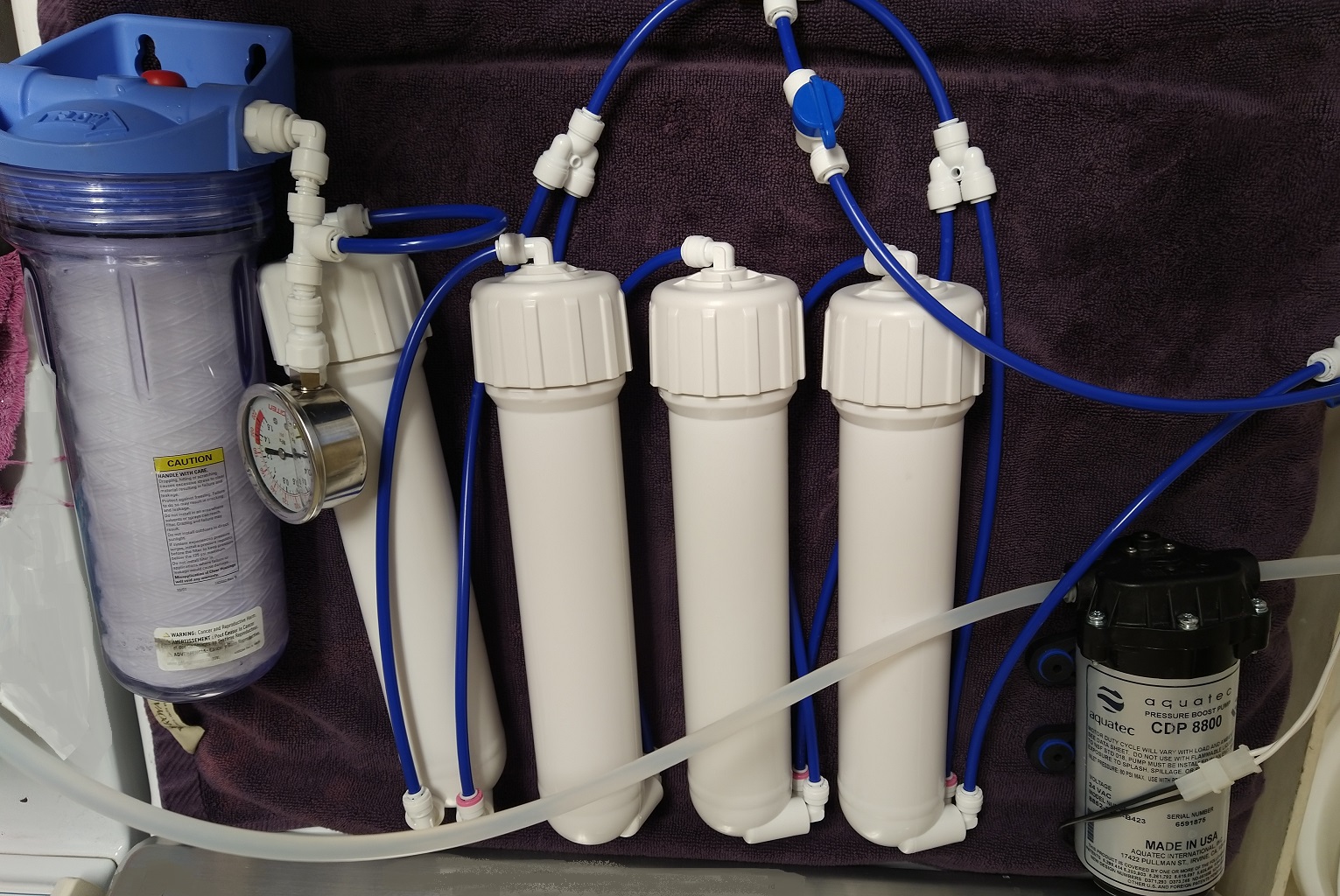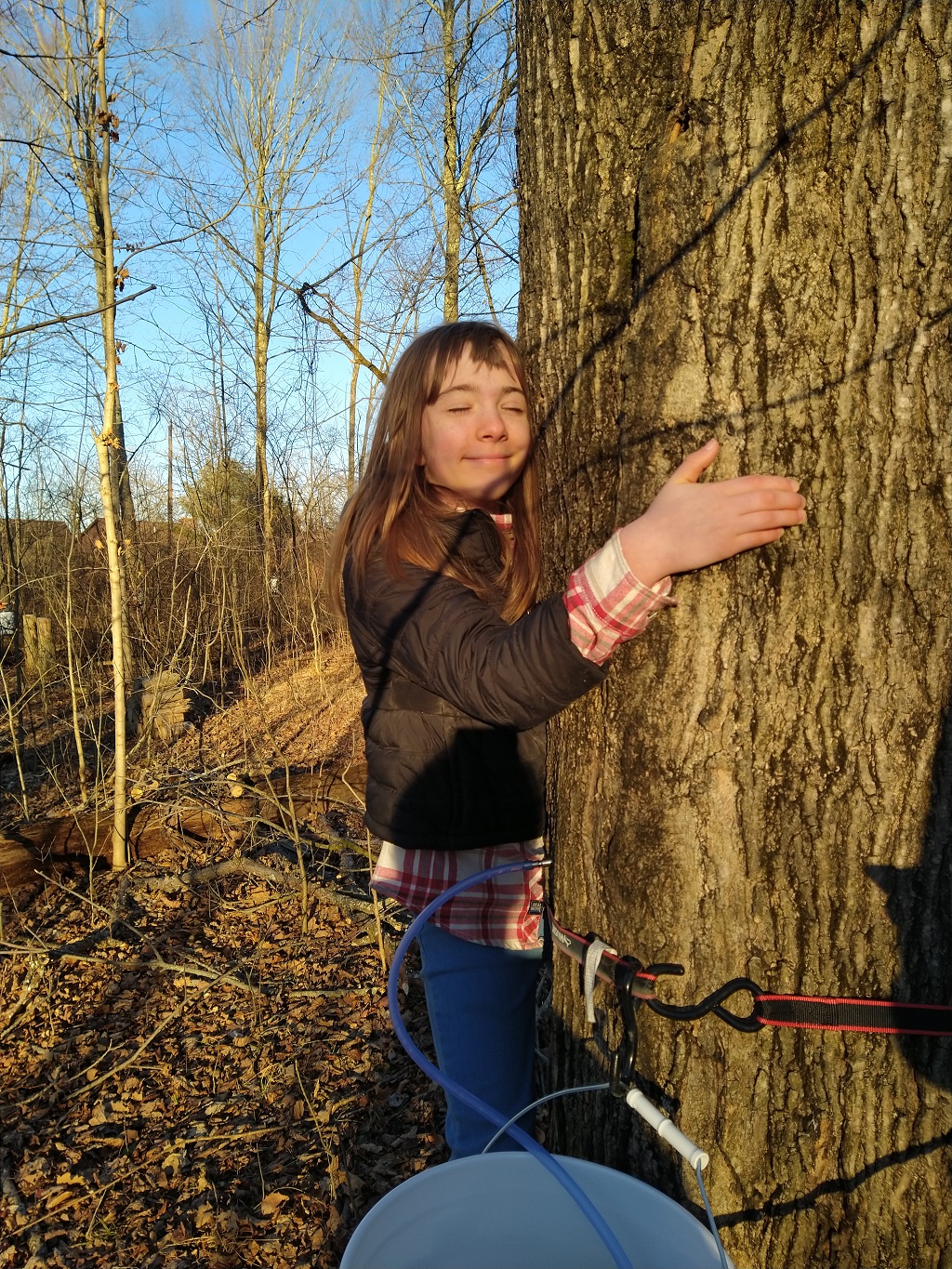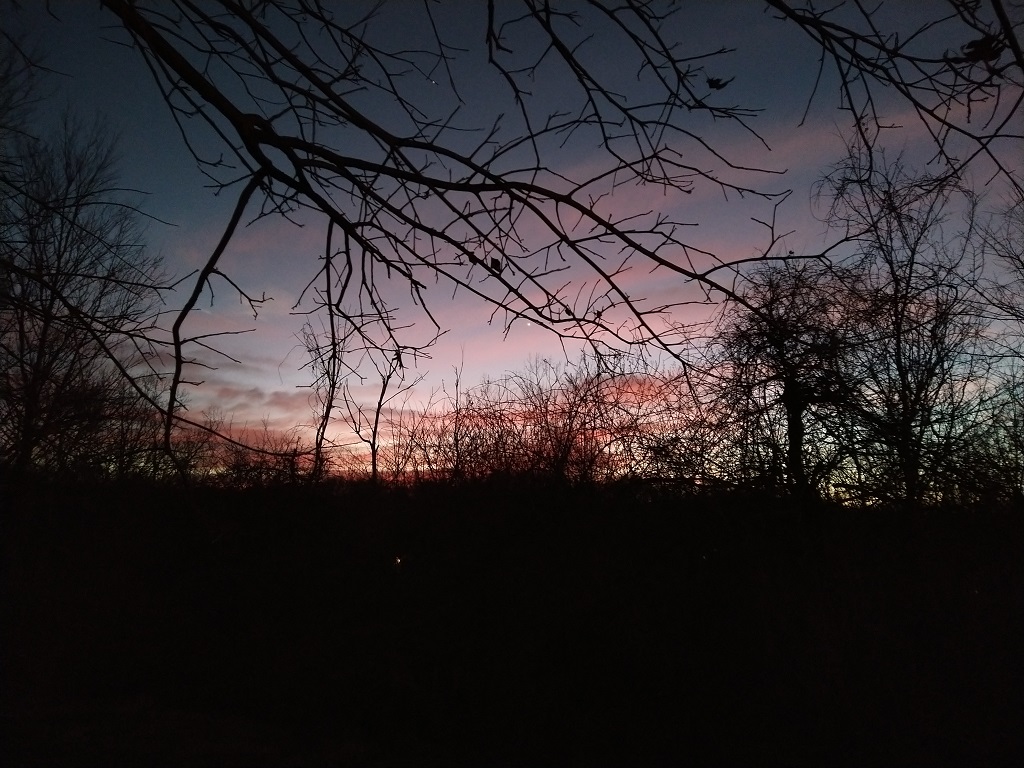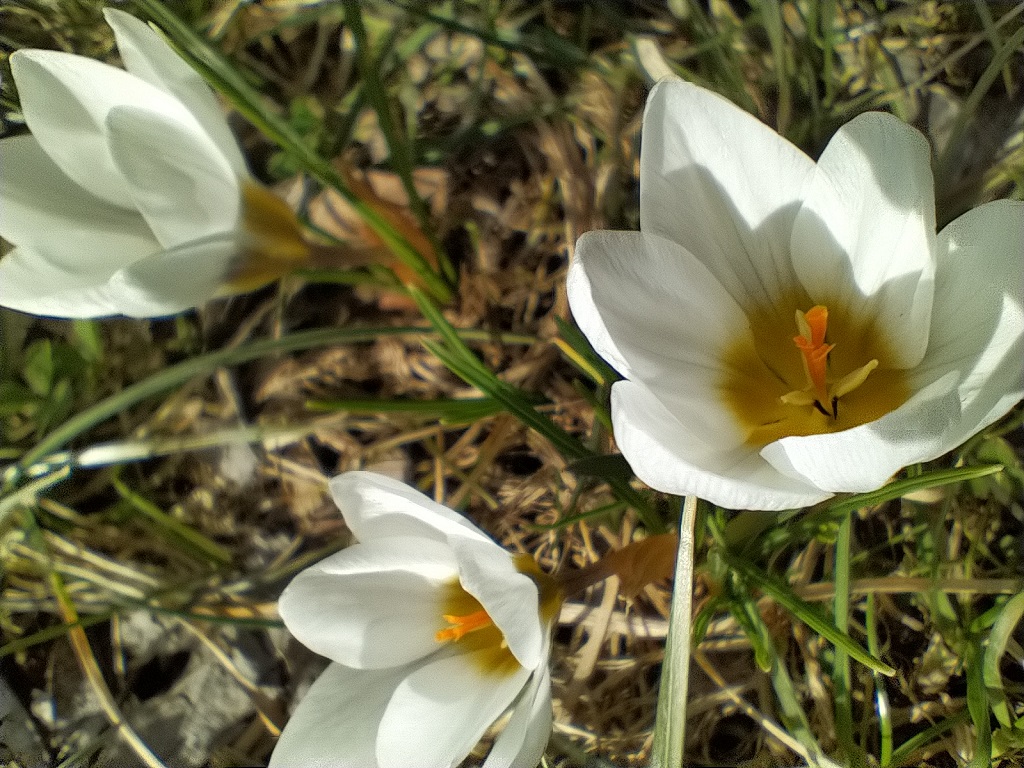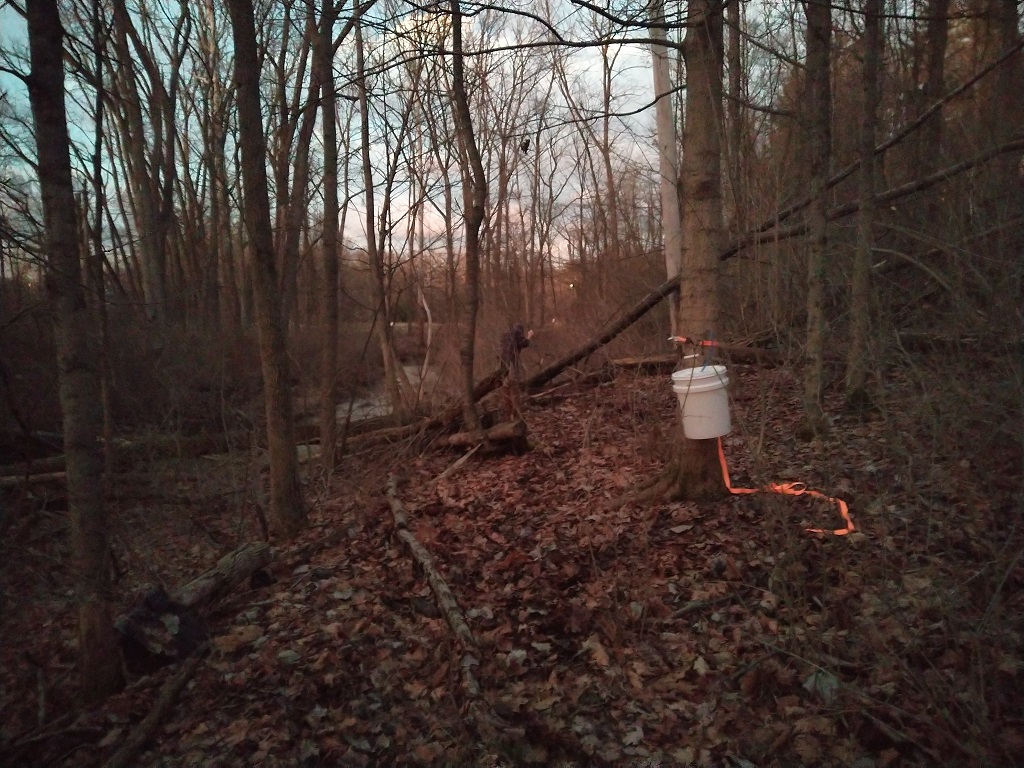Instead of taps with a hook for a bucket (which seemed, to me, like it would put a lot of stress on the tree!), we use ratchet straps to hold our maple buckets. One end of the “S” is passed into the fabric loop that holds the other “S” — and that other “S” becomes our bucket hook. I like the bright orange straps because it makes finding trees in the woods very easy (bright white buckets look obvious too, but they can hide behind the tree).
Our first set of buckets has large holes drilled into the lids — which are great for larger trees with multiple taps. But the new buckets we bought this year have tube-sized holes to prevent rain from leaking into the bucket.
